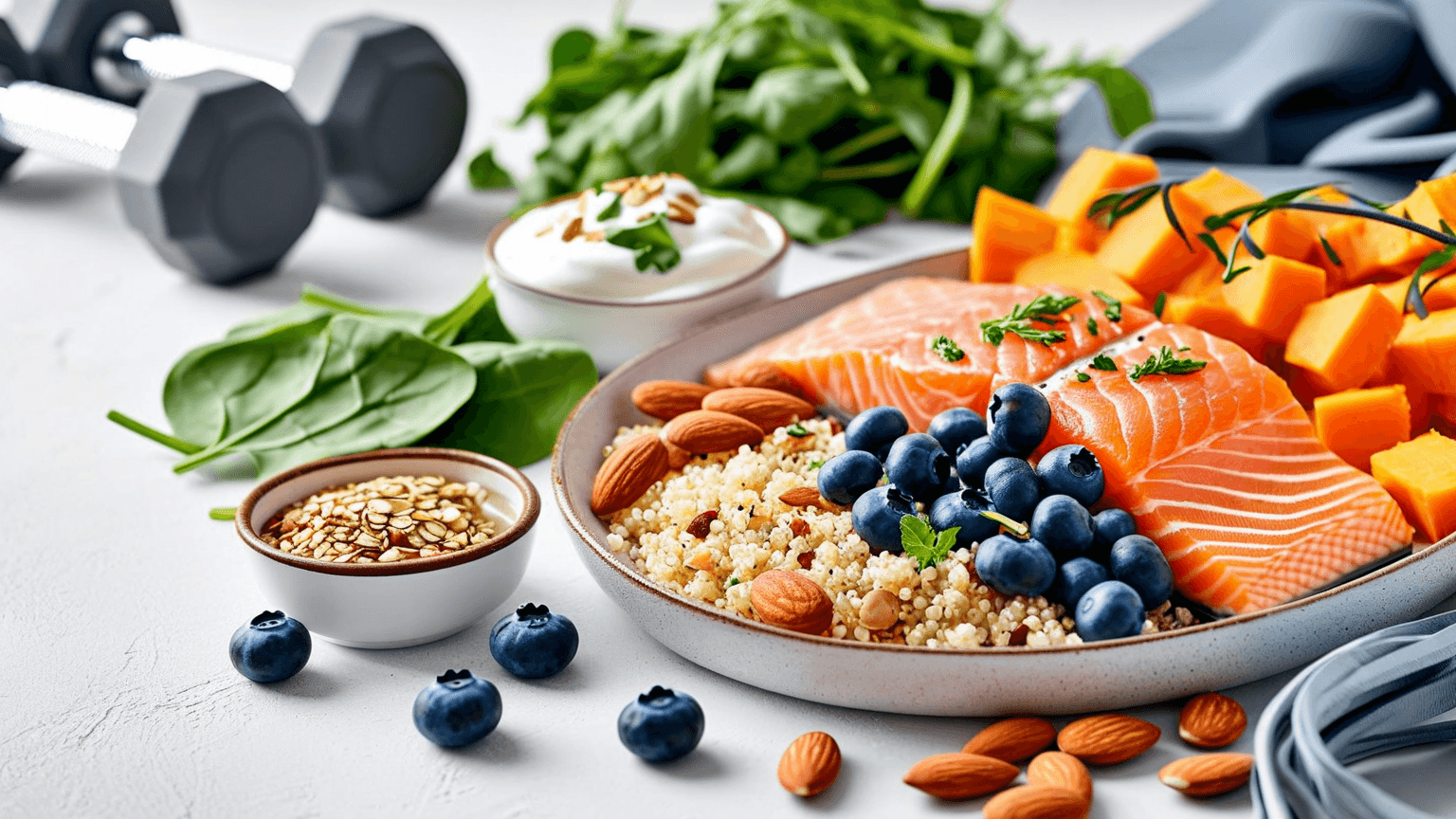understanding muscle soreness and is a key focus of this article. Muscle soreness, often referred to as delayed onset muscle soreness (DOMS), typically occurs 24 to 48 hours after exercise. This type of soreness is a result of microscopic damage to muscle fibers during physical activity, which is a natural part of the muscle adaptation process. When you exercise, especially if it's intense or involves new movements, your muscles undergo stress that leads to tiny tears in the muscle fibers. As your body repairs these tears, you may experience soreness. This repair process is crucial as it helps the muscles to become stronger and more resilient over time.
understanding muscle soreness and is a key focus of this article. It's important to note that DOMS is more common when you perform eccentric exercises—those that lengthen the muscle under tension, such as lowering weights or downhill running. These movements can cause more microscopic tears compared to concentric exercises, where the muscle shortens. Understanding the types of exercises that lead to DOMS can help you anticipate soreness and manage your recovery strategy accordingly.
Does Muscle Soreness Mean Growth?
understanding muscle soreness and is a key focus of this article. The idea that soreness equals muscle growth is a common misconception. While muscle damage and the subsequent repair process are part of how muscles grow stronger and larger, soreness itself is not a direct indicator of growth. In fact, as you become more accustomed to a particular exercise or workout routine, you might experience less soreness even though you're still making progress. This is because your muscles adapt to the demands placed on them, becoming more efficient in handling the stress.
Why You Might Not Feel Sore
understanding muscle soreness and is a key focus of this article. If you're not feeling sore after a workout, it doesn't necessarily mean you're not making progress. Your body adapts to exercise over time, becoming more efficient at handling the stress you put it under. This adaptation can lead to less soreness as your muscles become accustomed to the workload. Additionally, factors such as hydration, nutrition, and rest can influence how sore you feel. For example, proper hydration and a nutrient-rich diet can support muscle recovery and reduce the likelihood of soreness.
understanding muscle soreness and is a key focus of this article. Furthermore, as your fitness level improves, your muscles become more conditioned to the activities you perform regularly. This means that even though you're not feeling the same level of soreness, your muscles are still undergoing growth and adaptation. It's crucial to focus on overall performance improvements and strength gains rather than just the presence or absence of soreness.
Should You Work Out When Sore?
understanding muscle soreness and is a key focus of this article. Deciding whether to exercise during muscle soreness can be tricky. Here are some considerations to help you make an informed decision:
Listen to Your Body
understanding muscle soreness and is a key focus of this article. If you're still sore after 2 days, it's essential to listen to your body. Mild soreness is generally okay, and you can continue exercising, but if the soreness is severe or if you feel pain, it might be best to rest or focus on a different muscle group. Ignoring severe soreness can lead to overtraining, which may cause injuries and setbacks in your fitness journey.
understanding muscle soreness and is a key focus of this article. It's important to differentiate between normal soreness and pain that indicates an injury. If you experience sharp or persistent pain, it's advisable to consult a healthcare professional before continuing your workout routine. Your body's signals are crucial in preventing injuries and ensuring long-term progress.
Light Activity Can Help
understanding muscle soreness and is a key focus of this article. Engaging in light activities like walking, yoga, or stretching can promote blood flow to sore muscles, aiding in recovery. These activities can also help reduce stiffness and improve your overall mobility. Incorporating light exercises into your routine can accelerate the healing process and prevent soreness from hindering your daily activities.
understanding muscle soreness and is a key focus of this article. Moreover, light activities can be a form of active recovery, allowing your muscles to heal while still keeping you physically engaged. This balance can help maintain your fitness levels and prevent deconditioning during periods of soreness.
Balance Rest and Activity
understanding muscle soreness and is a key focus of this article. While it's essential to allow your muscles time to recover, complete rest isn't always necessary. Instead, balance your rest days with active recovery and alternate between different muscle groups to prevent overtraining. This approach allows your body to repair without losing progress, as you can continue to work on different areas while others recover.
understanding muscle soreness and is a key focus of this article. By planning your workouts strategically, you can avoid overworking specific muscles and reduce the risk of injury. Incorporating a mix of strength, cardio, and flexibility exercises ensures a well-rounded fitness routine that supports recovery and growth.
Tips for Managing Muscle Soreness
understanding muscle soreness and is a key focus of this article. Managing muscle soreness effectively can help you stay on track with your fitness goals. Here are some practical tips:
Stay Hydrated
understanding muscle soreness and is a key focus of this article. Drinking plenty of water helps flush out toxins and supports muscle recovery. Make sure you're staying well-hydrated before, during, and after exercise. Hydration is essential for maintaining optimal muscle function and preventing excessive soreness.
understanding muscle soreness and is a key focus of this article. Additionally, consider incorporating electrolyte-rich beverages if you're engaging in intense or prolonged workouts. These can help replenish minerals lost through sweat, further supporting muscle recovery and reducing soreness.
Proper Nutrition
understanding muscle soreness and is a key focus of this article. Consuming a balanced diet rich in protein, carbohydrates, and healthy fats provides the necessary nutrients for muscle repair and growth. Consider incorporating foods like lean meats, fish, eggs, and plant-based proteins into your meals. A varied diet ensures you receive all the essential amino acids and nutrients needed for optimal recovery.
understanding muscle soreness and is a key focus of this article. Don't forget the importance of post-workout nutrition. Consuming a protein-rich snack or meal within an hour after exercising can enhance muscle repair and reduce soreness. Including antioxidant-rich foods like fruits and vegetables can also help combat inflammation associated with muscle soreness.
Prioritize Sleep
understanding muscle soreness and is a key focus of this article. Adequate sleep is crucial for muscle recovery. Aim for 7-9 hours of quality sleep per night to give your body the rest it needs to repair and grow. During sleep, your body undergoes numerous restorative processes, including the release of growth hormones that aid muscle recovery.
understanding muscle soreness and is a key focus of this article. Establishing a regular sleep routine can enhance the quality of your rest, further supporting your fitness goals. Consider creating a calming bedtime routine and ensuring your sleep environment is conducive to restful sleep.
Use Foam Rollers
understanding muscle soreness and is a key focus of this article. Foam rolling can help alleviate muscle tightness and improve circulation, which may reduce soreness. Spend a few minutes rolling out sore areas after your workouts. This self-myofascial release technique can help break up adhesions and promote blood flow to the muscles, enhancing recovery.
understanding muscle soreness and is a key focus of this article. Incorporating foam rolling into your routine can also improve flexibility and range of motion, allowing you to perform exercises more effectively. Make it a regular part of your warm-up or cool-down to maximize its benefits.
Common Questions About Muscle Soreness
Is It Okay to Workout While Sore?
understanding muscle soreness and is a key focus of this article. Yes, it's generally okay to work out while experiencing mild soreness. However, if you're in pain or the soreness affects your form, it's best to rest or modify your workout. Listening to your body and adjusting your routine accordingly ensures you continue progressing without risking injury.
understanding muscle soreness and is a key focus of this article. If you choose to work out while sore, consider lowering the intensity or focusing on different muscle groups. This approach allows you to maintain consistency in your training while minimizing the risk of overuse injuries.
Does Soreness Mean You're Building Muscle?
understanding muscle soreness and is a key focus of this article. Not necessarily. Soreness is a sign of muscle stress and repair, but it's not a direct indicator of muscle growth. Focus on consistent training, proper nutrition, and adequate rest for muscle development. Tracking your progress through performance metrics and body measurements can provide a clearer picture of your muscle growth over time.
understanding muscle soreness and is a key focus of this article. Remember that muscle growth is a gradual process, and factors like genetics, training intensity, and recovery practices all play a role. Emphasizing a holistic approach to fitness can yield better results than focusing solely on soreness.
Should You Feel Sore After Every Workout?
understanding muscle soreness and is a key focus of this article. No, you don't need to feel sore after every workout to see progress. As you adapt to your routine, you might experience less soreness while still making gains. This reduction in soreness indicates that your muscles are becoming more efficient and resilient, a positive sign of adaptation and growth.
understanding muscle soreness and is a key focus of this article. It's important to vary your workouts to keep challenging your muscles and prevent plateaus. Introducing new exercises or increasing the intensity gradually can help maintain progress without relying on soreness as a measure of success.
Why Am I Not Sore After Working Out?
understanding muscle soreness and is a key focus of this article. If you're not sore after a workout, it could mean your body has adapted to the exercises, or your recovery practices are effective. It doesn't necessarily mean you're not progressing. Focus on performance improvements, such as lifting heavier weights or completing more repetitions, as indicators of progress.
understanding muscle soreness and is a key focus of this article. Additionally, consistent recovery practices like proper nutrition, hydration, and rest can minimize soreness while still supporting muscle growth. Trust the process and monitor your overall fitness improvements rather than just relying on soreness.
Conclusion
understanding muscle soreness and is a key focus of this article. Muscle soreness is a natural part of the exercise process, but it's not the only sign of progress. Understanding the connection between muscle soreness and growth can help you make informed decisions about your fitness routine. Remember to listen to your body, balance activity with rest, and practice good recovery habits to support your fitness journey. Whether you're sore or not, consistency and mindful training will lead to long-term success. Embrace the process, and you'll find that soreness is just one small part of a much larger picture of health and fitness.
understanding muscle soreness and is a key focus of this article.
Note: Consider adding internal links to related articles for better SEO performance.
Related Topics
Explore more superfood insights and nutrition guidance.



